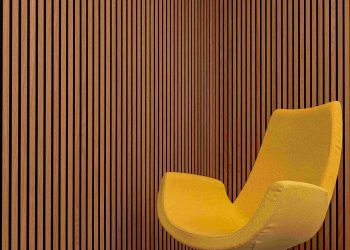How to Effectively Conduct a Design Critique Session
Design critiques are the lifeblood of innovative product creation, yet many sessions fall victim to stale routines and unproductive dialogue. Without strategic facilitation, these meetings often resemble chaotic debates more than collaborative discussions. This article offers a fresh lens on conducting critiques, unraveling how this critical practice not only improves designs but also elevates team dynamics, decision-making, and the future of our work environments.
Picture this scenario: A nervous designer presents their latest work to a room full of peers, bracing themselves for a barrage of ‘this doesn’t work’ and ‘you should change that.’ The critique ends, and little changes. The team walks away questioning the process, and the designer is left frustrated, their creativity overshadowed by procedural inefficiencies. But what if we reimagined the critique session as not just a design savior but a cultivator of workplace trust, growth, and cross-disciplinary thinking?
Deconstructing the Status Quo
Critique sessions often perpetuate a culture of judgment rather than progress. Traditionally, critiques are seen as processes for designers to defend their decisions rather than opportunities for learning and iteration. This outdated perspective is steeped in binary thinking—right versus wrong, better versus worse—and fails to address the multifaceted nature of design as both an art and a science. To challenge this, we must acknowledge that design doesn’t live inside silos. It intersects with psychology, philosophy, and even business strategy, demanding feedback as holistic as the problems it tries to solve.
The Power of Interdisciplinary Insight
Take, for example, the notion of ’empathy,’ a core principle in design. Empathy isn’t just about understanding user pain points; it’s rooted in psychology and anthropology, requiring input far beyond the designer’s domain. By opening design critiques to non-design team members—engineers, marketers, business analysts—teams can uncover layers of insight that traditional environments fail to address. A marketer might highlight messaging inconsistencies, while a developer might point out technical limitations, bridging gaps between fields to inform smarter, user-centered outcomes.
Predicting the Future: Design Critiques as Microcosms of Workplaces
More companies are now prioritizing ‘design thinking’ as integral to their innovation strategies. But the critique sessions of the future won’t just revolve around design. These forums will become integral spaces where knowledge transfer and cross-disciplinary collaboration thrive. They will serve as practice grounds for refining problem-solving amidst increasing workplace diversity and rapid technological advancements.
Imagine critique sessions integrating AI-powered tools. Algorithms analyze feedback data to identify biases or repetitive patterns, while machine learning predicts design success based on user personas. Such tech-forward sessions offer potential to democratize critique exchanges, making them more transparent and inclusive.
Actionable Steps: Mastering the Art of Critiques
-
Define Objectives:
Begin your session with clearly articulated goals. Ask, “What are we hoping to refine or uncover?” without expecting total perfection. -
Facilitate with Structure:
Employ frameworks like ‘I like, I wish, What if,’ to encourage constructive, non-confrontational feedback. -
Encourage Diversity:
Broaden participation across departments to integrate perspectives outside the design field. -
Time Constraints:
Limit presentation and discussion durations to keep momentum focused and energetic. -
Focus on Questions:
Prioritize inquiry over instruction. Feedback framed as questions fosters creative exploration rather than defensiveness.
Critiques should inspire designers to embrace imperfection and iteration, empowering them as ‘knowledge builders.’ To cultivate this mindset, sessions should celebrate experimentation and imperfection rather than penalizing it.
Continuous Learning: From Feedback to Growth
Feedback is foundational not just to better products but to personal and professional growth. Critique sessions train designers and stakeholders to approach problems with curiosity and humility, fostering resilience amid setbacks. They also instill a culture of self-education, where every piece of feedback becomes a lesson extending beyond the task at hand.
As Albert Einstein famously said, ‘The important thing is not to stop questioning.’ Design critiques, when done effectively, breathe life into this principle, pushing us to continually challenge how we think, create, and innovate. Ignore critiques at your peril; fail to evolve, and you’ll stagnate in an era where adaptability is survival.











